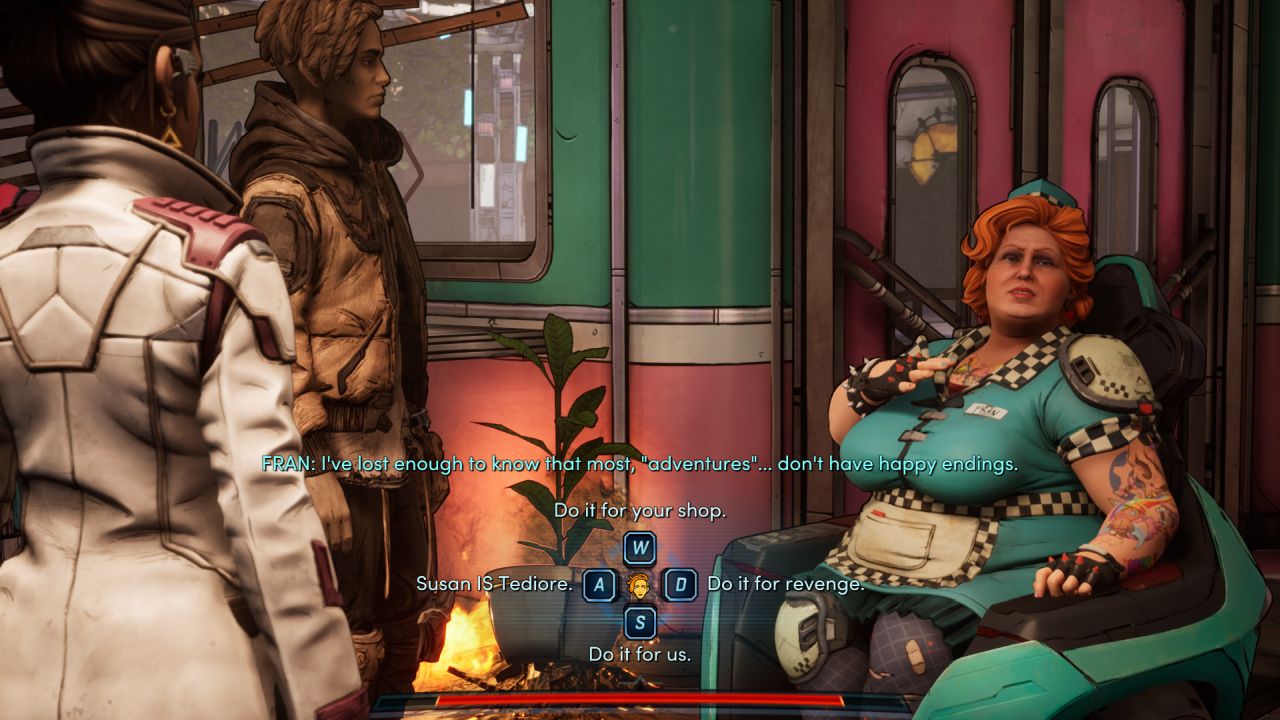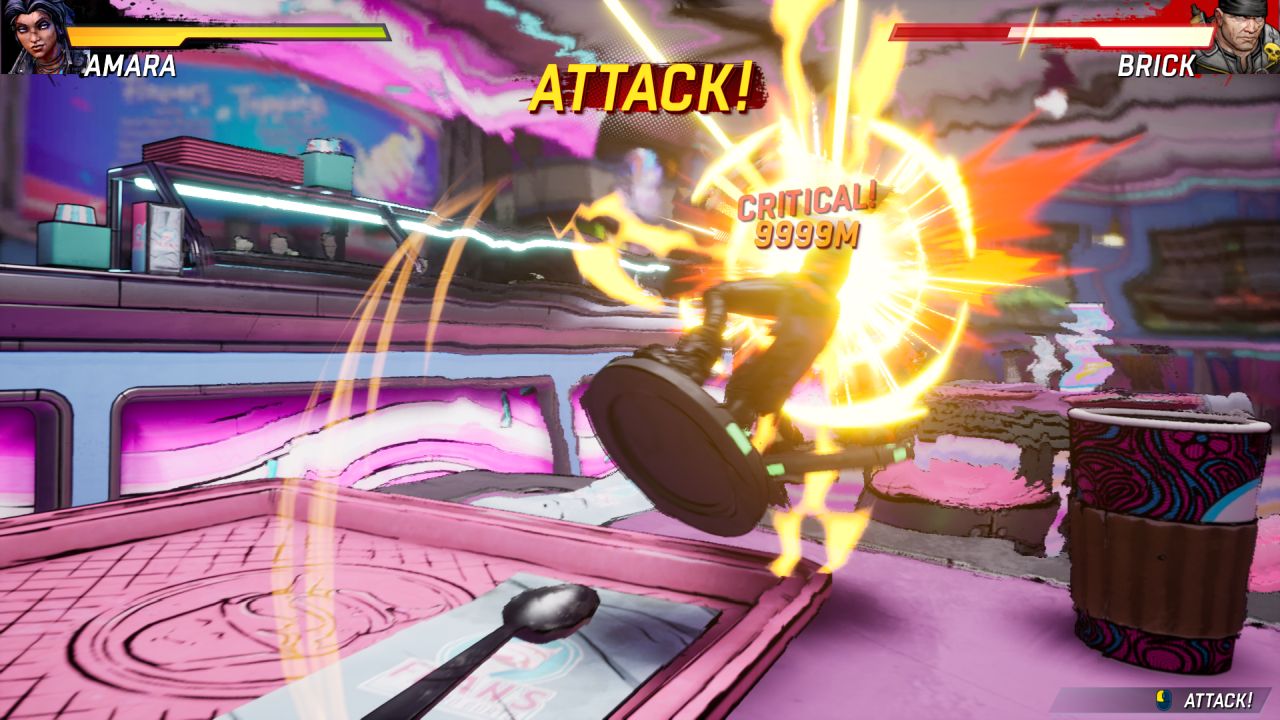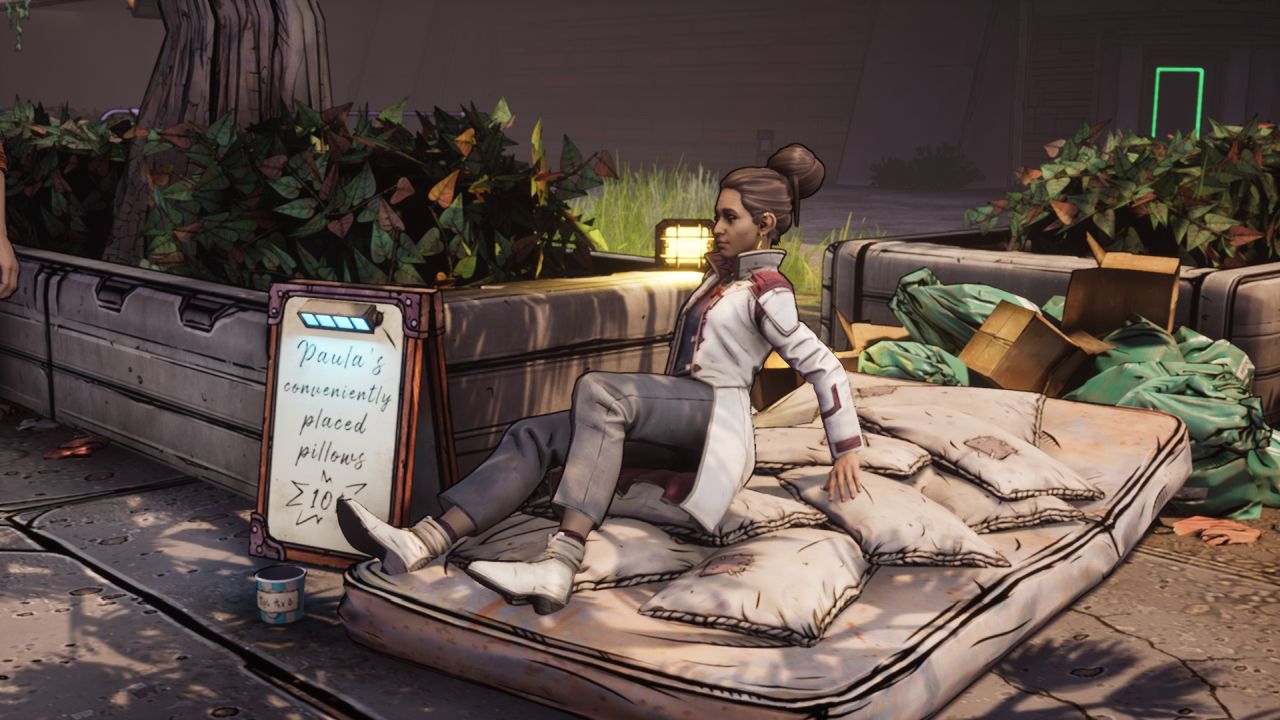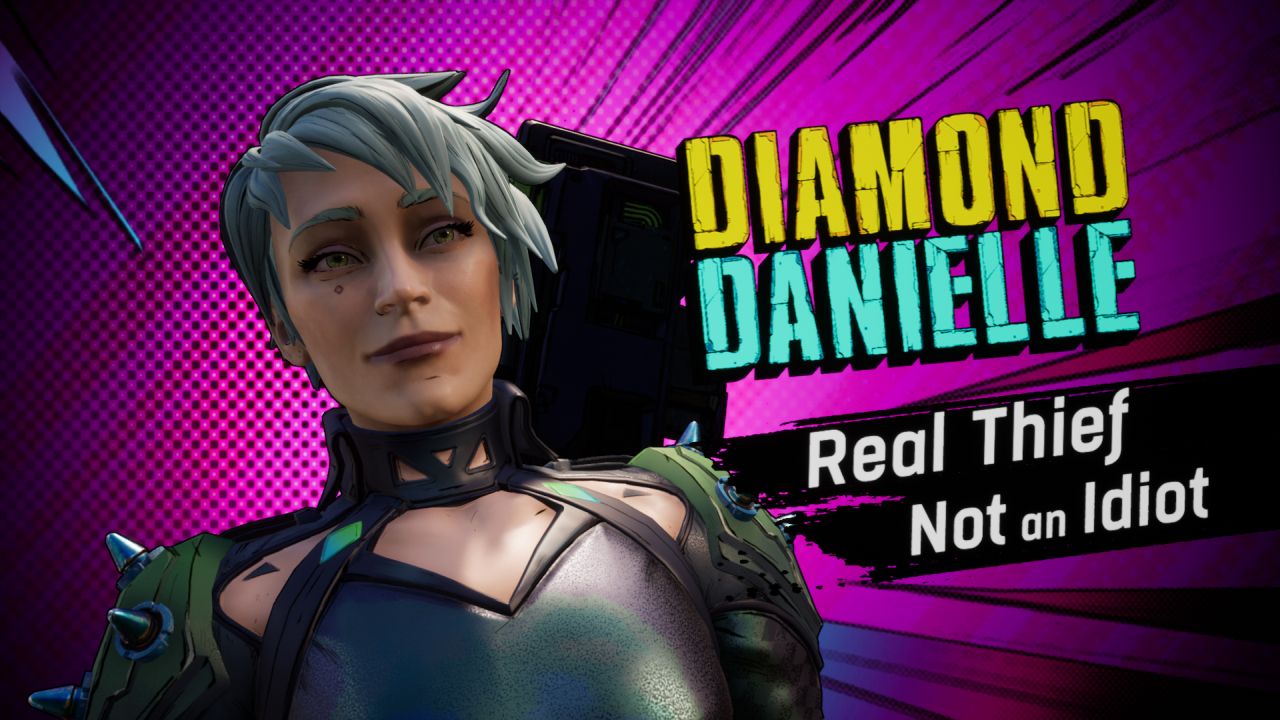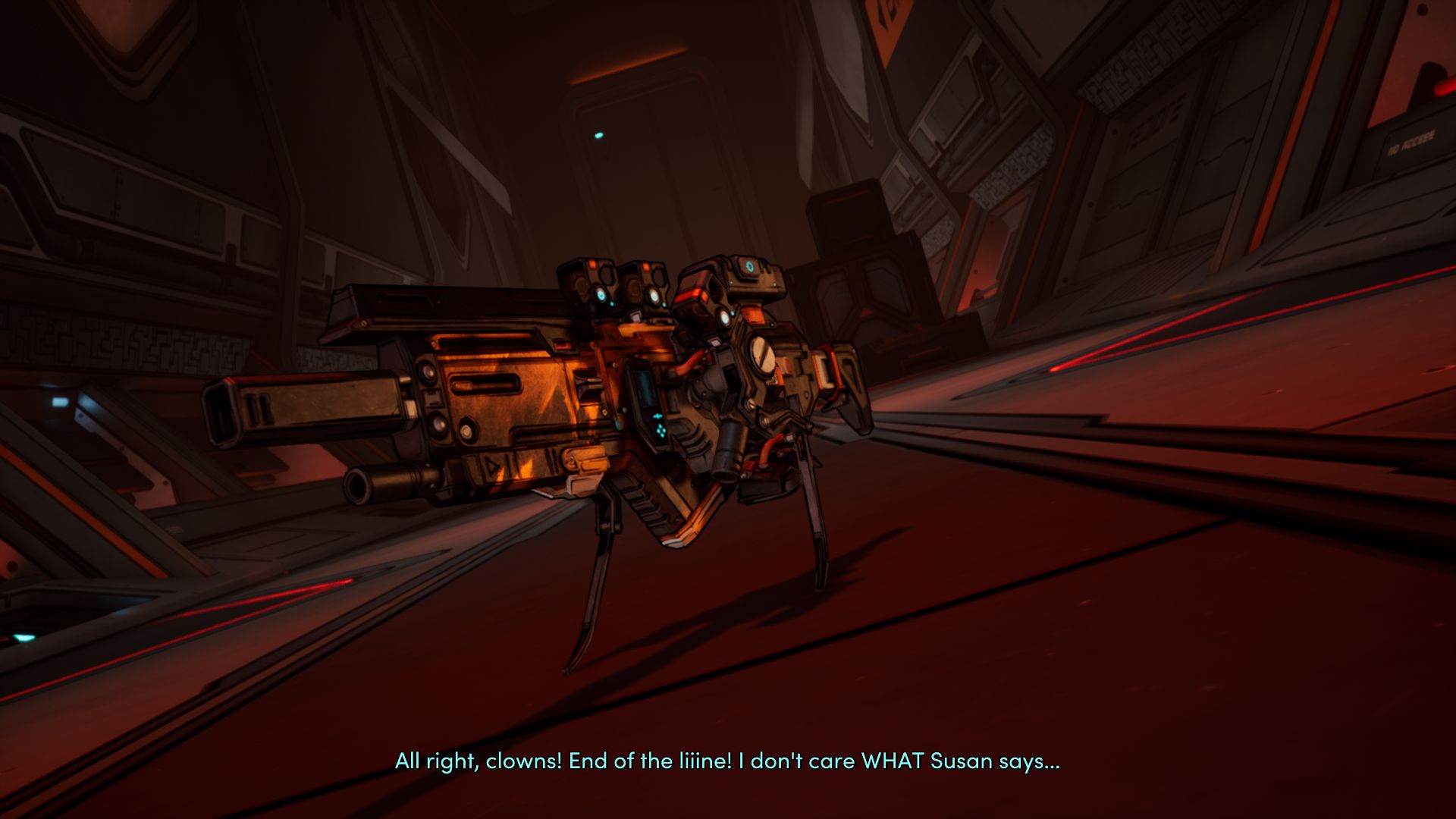Game Articles and Videos Thread
- Thread starter hanselthecaretaker
- Start date
Recommended Videos
I'm surprised you didn't post SkillUp's video BrawlMan.
Anyway, this would have been a huge disappointment for me if the first gameplay video they dropped didn't already kill any hope I had in this game.
Its bizarre how cheap this games comes off as. As SkillUp said, feels like they pivoted from a The Avengers clone to a less live service model by just basically flipping the GAAS switch from on to off. I'll probably watch some cutscene compilation, because I am at the very least interested in the plot and characters. Or maybe I'll actually play the game when it inevitably goes for 10 bucks or even for free.
Anyway, this would have been a huge disappointment for me if the first gameplay video they dropped didn't already kill any hope I had in this game.
Its bizarre how cheap this games comes off as. As SkillUp said, feels like they pivoted from a The Avengers clone to a less live service model by just basically flipping the GAAS switch from on to off. I'll probably watch some cutscene compilation, because I am at the very least interested in the plot and characters. Or maybe I'll actually play the game when it inevitably goes for 10 bucks or even for free.
Somebody had to say it, lol.

 www.eurogamer.net
www.eurogamer.net

Gotham Knights is a poor effort with a range of technical issues
Gotham Knights has some big shoes to fill as a follow-up to the brilliant Batman Arkham Knight, an early last-gen title…
Gotham Knights has some big shoes to fill as a follow-up to the brilliant Batman Arkham Knight, an early last-gen title that pushed graphical and gameplay boundaries. Even today, the Rocksteady game impresses with a gritty, rain-soaked rendition of Gotham City swarming with criminals. Unfortunately, Gotham Knights fails to hit the same heights from a gameplay perspective, while there are big questions about its technical make-up. Why limit performance to 30 frames per second? Why were the last-gen versions cancelled with little technical ambition here? And after Arkham Knight, how come the game looks visually underwhelming?
The cancellation of the last-gen versions is puzzling because this is a thoroughly last-gen title in terms of its basic visual make-up - expect to see decent-looking PBR materials, a baked global illumination system, and extensive TAA coverage. Even relative to eighth-gen standards though, this isn't great stuff. Characters and other dynamic objects often stick out dramatically from the environment, for instance, lacking any sort of cohesion within the GI system. This is a common issue when dealing with baked GI of course, but the results here are often poor - with characters often looking like they have no integration into the game lighting at all, weirdly glowing. When lots of dynamic lights are onscreen there's a closer match between the lighting systems, as would be expected, but under primarily indirect lighting the results can look odd.
There are other issues with the lighting and shadowing. Ambient occlusion is quite restrained here, so geometry doesn't seem grounded very effectively within the environment. Specular highlights are another concern, which are often misaligned with the objects onscreen. This tends to stick out quite a bit as the gameworld is always dark and rain-slicked, in typical Batman fashion. These aren't huge issues taken individually but they make Gotham City feel disjointed. Overall the city feels quite clinical and much less stylised than you'd expect. Gotham has a certain visual signature in other media, a version of New York City with an emphasis on older architectural styles, often portrayed at night and with heavy rain.

Here Gotham doesn't distinguish itself from other open-world titles. The city layout itself is wide-open and modern, with broad avenues, a simple grid layout, and contemporary building styles. Objects in the far distance are often quite easy to see given the lack of smoke and other visual obstructions. Most baffling however is the lack of rain. If you look very closely you can spot rain in most outdoor scenarios, but it's barely visible, never rising to anything above a mild drizzle. The game's visual design just doesn't make much sense, especially considering how the city is depicted in other titles, especially Arkham Knight. This is a pretty serious and grimy game that takes place after Batman has been killed, so the clean and somewhat generic look just doesn't feel appropriate.
That said, there are aspects of the visuals that do work well. Oddly enough for an open-world title, interior spaces are a highlight. These areas are very detailed and feel like a closer match for the Batman aesthetic, with grimy corridors and moody volumetrics. The art and design can impress, like the neon-soaked archways of the Iceberg Lounge. It's definitely still mired firmly in cross-gen tech here, but the results are at least consistent with expectations for a big-budget release.
Asset quality is quite high in certain areas across the game, especially indoors. This evidence locker is packed with geometric detail and variety, for instance. On close inspection, most of the assets in closed-off zones hold up very well - clearly a lot of effort went into putting these areas together. Geometric and texture detail takes a bit of a hit in the open world as you might expect, although at typical viewing distances there are no issues. Plus, player and enemy models are generally high-quality.
There are basic technical problems here. Notice how the characters here are not at all integrated into the game's global illumination solution, leading to bizarre glowing.
My overall impression of Gotham Knights is that it's less than the sum of its parts. A lot of time and hard work has clearly been poured into this game, but strange design choices, odd technical hangups, and a lack of aesthetic commitment make the final product underwhelm. Evaluated on its own terms, Gotham Knights is a generic and unexciting game that has its moments, but that ultimately falls well behind the curve for an open-world title.
But many people aren't evaluating Gotham Knights on its own - they are comparing it to Arkham Knight, Rocksteady's last-gen classic and comparisons are not flattering. Arkham Knight's Gotham City is a mess of dense, centuries-old stonework and narrow roads, bathed in smoke and drenched with rain. Gotham Knights has a much more generic atmosphere, in contrast. Certain differences immediately stick out, like rain effects, which come down thick and interact nicely with lighting in the earlier title, and are virtually non-existent now. The atmospheric effects and fog have been carefully crafted to make for a convincing skyline, with certain elements like window lights, managing to pierce through. Gotham Knights' distant detail looks like a soupy mess in contrast.
By comparison, Gotham Knights just looks lifeless - and that's actually literally true as well. Arkham Knight was swarming with gangs of criminals and fleeing pedestrians. You couldn't go very far on foot without being confronted by gangs of enemies ransacking the city. Gotham Knights is so devoid of life by comparison that I could drive around for minutes without spotting anything other than the occasional civilian. It's a pretty remarkable change and feels very odd.
In fairness, image quality is very clean on all consoles - even Series S - while ray-traced reflections are a nice addition... though the junior Xbox lacks this feature.
In terms of atmosphere and effects, Rocksteady's Gotham beats this new rendition hands down. However, Gotham Knights does score some wins if you measure assets side-by-side. Arkham's texture work still looks perfectly fine, but surfaces generally do showcase higher-res 2D art in Gotham Knights. Chalk this up to running with extra memory perhaps, or possibly the more limited asset variety in Gotham Knights is helping somewhat. Interiors in general showcase less granular detail in Arkham Knight as well, though these environments are one of the few highlights in the game. More modern TAA also trumps the post-process anti-aliasing of Arkham Knight too, giving a cleaner look.
Years on though, it seems clear to me that Arkham Knight is the more accomplished title. It showcases a much more coherent and attractive world, with beautiful environmental art and design. That applies to gameplay as well, sadly. Gotham Knights has a somewhat clunky combat system that I never really felt very connected to over my hours of play. It's functional and most of the basics of melee fighting are present and accounted for, but it doesn't flow very well. Animation is a relative low point here, as character movement often looks jilted and odd, while combat in the older title is more flowing and impactful than the new game's rendition.
Arkham Knights' key gameplay change relative to prior entries was the introduction of the Batmobile, a sleek but powerful vehicle for Batman to use in enemy pursuits. Gotham Knights similarly features the Batcycle, a slimmer and two-wheeled variant that has similar features. However, this is a much less compelling gameplay device. The Batmobile navigated Gotham in a haphazard sort of way. Arkham Knight's city was snaked with winding roads and narrow alleys, so getting the Batmobile into position often required fast turns and seat-of-your pants driving. The vehicle suspension came alive and anything you hit - cars, fences, even stone barriers and columns - would break apart in a shower of sparks and rubble.
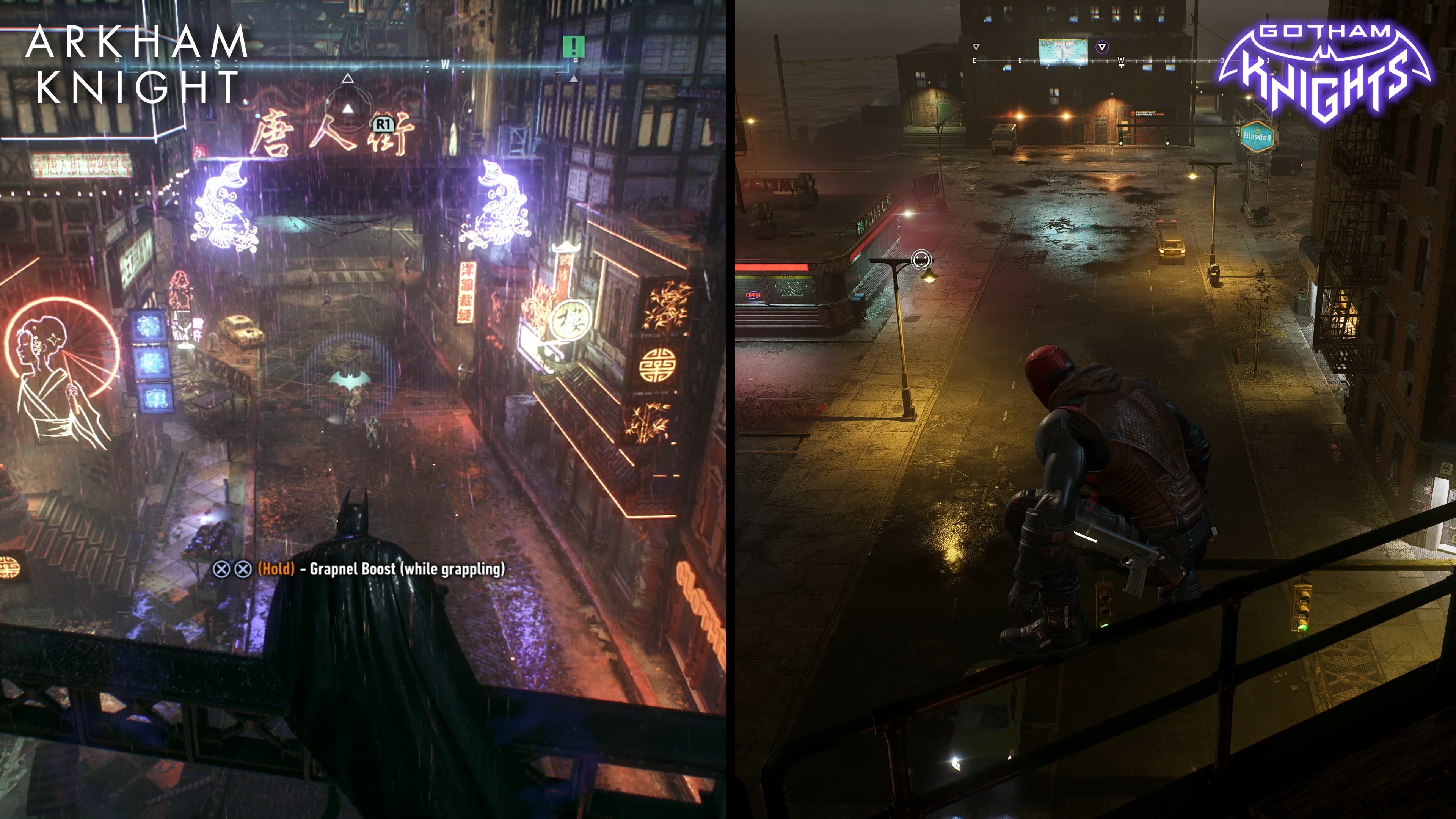
Gotham Knights has a cleaner image but in terms of open world design, atmospherics and sheer density, Arkham Knight remains streets ahead, years after its release.
Gotham Knights' Batcycle is boring by comparison. The broader, more conventional city layout in this game means that this new bike is much less exciting to drive. Most of the time you'll be going down straight roads with minimal obstruction. Turning feels odd, as the camera feels almost glued to the back of the bike - the game doesn't let you really feel the back slide out with a less responsive camera like in Arkham Knight. The sense of speed in Gotham Knight is lessened dramatically from Arkham as a result of these changes, alongside reduced motion blur compared to the earlier title. The corners of the screen do get a 'speed arrows' 2D effect overlaid to enhance the feeling of velocity but I found it distracting and I wish there was a toggle to turn it off.
In most respects, Gotham Knights falls well short of its predecessor. It's a serviceable action title with unsatisfying visuals, without the gameplay or visual flair that made Arkham Knight so unique. There are technical problems too, though to discuss positives first, image quality holds up. PS5 and Series X both manage a 4K presentation, rendering a 2160p pixel count at maximum, while Series S turns in at 1440p. Dynamic resolution is a possibility, though I didn't encounter it in my testing. Overall image quality is very good on all machines, I have zero complaints here really - all versions of the game look stable and clean, with an excellent handling of distant detail. Even Series S looks good and appears surprisingly comparable to the premium machines in still shots. The primary difference is a little bit of visible edge aliasing on Series S at times, a minimal amount of additional image breakup, and somewhat less detail, though this is hard to notice from typical viewing distances.
Outside of resolution, the predominant visual difference is the addition of ray-traced reflections on Series X and PS5. These are high-quality and apply to most reflective surfaces, adding an extra layer of depth. Even the ocean surface gets RT reflections here, though it looks somewhat noisy as you might expect. Examined up close, reflections generally resolve with a good level of detail and seem to reflect a reasonably complex version of the environment. I did notice that certain screen-space details were overlaid on reflective surfaces when available, enhancing the final resolve of the reflection. Series S, as expected, falls back to the last-gen staples - cube-maps plus screen-space reflections. The results look reasonably high-quality, though stability takes a backseat to the RT implementation, and reflective surfaces that run parallel to the camera look quite off at times.
Remember the fuss about a capped 30fps? The real story is the lack of adherence to the performance target on all machines, leading to lurching stutter and general slowdown - especially during traversal.
In terms of performance, true to the developer's word, we're getting just one visual mode here: there are no graphical settings tweaks available outside of colour correction. That should mean 30fps gameplay, at least on paper. Gotham Knights targets 30fps, but it is constantly beset by frame-rate drops, stutters, and frame-rate time fluctuations, especially evident in traversal. Interiors fare somewhat better, with fewer of the large performance drops, though the odd frame-time issues persist. Perhaps these areas stress the game's core rendering systems less, or trigger fewer issues with streaming. In any case, this is as good as it gets, though it's still unacceptably unstable - and this applies to all console platforms.
Perhaps the worst frame-rates I encountered were in the train terminals. I was able to get performance to collapse here, with lows around 20fps. There's no clear reason for this, although I was able to tank frame-rates across multiple runs through multiple terminals on the Xbox Series X. I didn't have any luck, however, in replicating this behaviour on the Series S or PS5, so perhaps this one issue is Series X-specific, or only emerges after a specific trigger. Really though, performance in this game is unacceptable. It seems like we are getting a mix of smaller frame-time problems, which should be fixable, along with problems with stuttering and frame-rate dips, which may prove more fundamentally challenging. At the moment, Gotham Knights can't even deliver a stable 30fps, falling well short of expectations.
If you want to play a Batman game, go back to the seventh and eighth-gen Batman titles in the Arkham series. Every one of those games - especially the excellent Arkham Knight, and including Arkham Origins, which was developed by WB Games Montreal as well - is a solid experience. Gotham Knights, in contrast, is beset by bland visual design, dull gameplay, and unacceptably poor performance. There are some bright spots in the mix, but my overall impression is that this game needs a very substantial reworking before it is worth your time. Given the amount of time and effort that has been sunk into making this game, perhaps that could still happen. But for now, I'd recommend staying away.
So basically the first few minutes, we see how Bats dies.
And you know? Pretty great cutscene. Great animation and camerawork. But Bats looks dumb as shit, only outdone by how stupid he sounds. Which feels like a very good representation of this game. Evidently a lot of work was put into this but so little of it resulted in actual quality.
I'm not subscribed to him. I sometimes post up his stuff, but I don't do it that often. The videos I posted up are people I subscribe to and that was all that was available at the time. I'm glad you posted it. You don't need me to post everything.I'm surprised you didn't post SkillUp's video BrawlMan.
Huh. I coulda sworn it was you posting all the SkillUp videos I see on here.I'm not subscribed to him. I sometimes post up his stuff, but I don't do it that often. The videos I posted up are people I subscribe to and that was all that was available at the time. I'm glad you posted it. You don't need me to post everything.
That is usually CriticalGaming or hanselthecaretaker who posts SkillUp vids.Huh. I coulda sworn it was you posting all the SkillUp videos I see on here.
When SU mentioned how developers said it's hard to do a game at 60 FPS on console and discussing it on Twitter. If that's the case, will you all (publishers, developers, and console hype boys/gals) please stop boasting about how powerful your consoles are and why we need to get them asap?! I know it's not always a developers, and it's the publishers and those that top pushing this crap, but certain developers are guilty of this too.I'm surprised you didn't post SkillUp's video BrawlMan.
Anyway, this would have been a huge disappointment for me if the first gameplay video they dropped didn't already kill any hope I had in this game.
Its bizarre how cheap this games comes off as. As SkillUp said, feels like they pivoted from a The Avengers clone to a less live service model by just basically flipping the GAAS switch from on to off. I'll probably watch some cutscene compilation, because I am at the very least interested in the plot and characters. Or maybe I'll actually play the game when it inevitably goes for 10 bucks or even for free.
I know none of this stuff is easy, but it still doesn't excuse the state Gotham Knights is in right now. Why copy Avengers of all things? I find it funny that all of the Arkham games play better than this. Even Origins looks more fun and interesting by comparison. The 3DS & Vits versions of Origins looks and plays better than this! There is so much weight of potential here. Seriously, give the next Batman game to Sloclap (the developers behind SIFU). WB Games might as well give the IP insomniac at this point as well. Either one works fine by me.
I rarely do. Maybe once every few months, but I generally enjoy hearing what he has to say.That is usually CriticalGaming or hanselthecaretaker who posts SkillUp vids.
Anyways, because I can’t help myself -

A Measured Analysis of Bloodborne’s Thematic Difficulty
To say From Software has a reputation for creating difficult video games would be a drastic understatement. In fact, their approach to…
All my fears and suspicions about the new season of Tales From the Borderlands looks to have come true. Without the old writers, of course the only way is down when you're being developed entirely in-house at gearbox  Anyway here's a review that doesn't give a fuck...
Anyway here's a review that doesn't give a fuck...

 www.rockpapershotgun.com
www.rockpapershotgun.com

New Tales From The Borderlands review: thanks, I hate it
"Spiritual successor" New Tales From The Borderlands is an unfunny mess of a narrative adventure, proving that Gearbox cannot be trusted with their own IP.
Am getting the urge to replay the first season now tho.In every story where a wish is granted - whether by some primary-coloured goon sticking out a lamp, a creepy piece of fairground entertainment, or a piece of cursed bushmeat - there's always an ironical sting in the tale. You wish for health and it turns out you can't die. You wish for a personal chef, but it turns out he only does offal. You wish everything you touch to turn to gold, then it'll turn out there's no way to turn it off - or it kicks in just as you go to the toilet, that kind of thing. You should, as the saying goes, be careful what you wish for.
I'm sorry I wished for New Tales From the Borderlands, everyone.
Tales From The Borderlands is an interactive narrative adventure set in the Borderlands universe, where you choose dialogue options, actions, and pass or fail quick-time events. These accumulate over the course of several episodes and ultimately contribute to the outcome of the story. It is, and I cannot stress this enough, fantastic, especially because how good it is came as a surprise when it released in 2014. Tales From The Borderlands is not only the best Telltale game, but also the best Borderlands game, probably because it wasn't made by Gearbox. I have wanted more Tales From The Borderlands for almost a decade now. Gearbox have seen fit to make one, in-house, and presumably out of profit rather than desire, or any affection for the title.

New Tales From The Borderlands is an interactive narrative adventure set in the Borderlands universe, where you choose dialogue options, actions, and pass or fail quick-time events. And it fuckin' sucks.
As before, you play multiple characters, switching control between them as they do different things in the story: anxious pacifist scientist Anu, her (heavy air-quotes) street-smart adoptive brother Octavio, and bloodthirsty fro-yo shop owner Fran. They are also accompanied by a robot called LOU13, pronounced Louis. For reasons I won't go into, the unlikely trio team up to steal a healing crystal from a vault, try to monetise their discovery, and eventually save the world from both the bloodthirsty head of the Tediore megacorp, and a strange entity living inside the crystal.
I honestly don't like being very mean about games. So in the interests of both brevity and clarity, I have decided to present the rest of this review as a list of things I like, and a list of things I did not like.
Good things about New Tales From The Borderlands
- The character designs are cool. I liked that Fran, who gets the best optional skins, is a wheelhoverchair user but is also a very physical character who gets the most traditionally heroic moments
- The voice acting is mostly decent, and the mocap means a lot of the animations feel idiosyncratic, as is befitting the universe and characters
- The banter between the Tediore drone guards is pretty funny, although it happens every time two or more Tediore guards are on screen and is therefore subject to diminishing returns
- In the Vaultlanders mini-game you smash two plastic figures together. They have stats but they do not appear to be important
- I like the weirdo Tediore guard who is a superfan of the in-universe miniatures game Vaultlanders, who turns up in increasingly unlikely places to battle the characters (this like does not extend to the mini-game in question itself)
- There is one (1) joke done by the above character involving Octavio hiding in a box that made me laugh out loud
- There's an angry shouty gun on legs called Brock, who goes "bang!" when he shoots; he can stay
- LOU13, who is an assassin bot, can also stay. Although he's on thin ice because of the played-out jokes about plugging into data ports being like sex
Things about New Tales From The Borderlands I did not like
- Rhys from the original Tales is in it, after he was brought back for Borderlands 3, and I know it's not the New Tales devs' fault, but the whole thing is very "Look how they massacred my boy!" for me
- If there are multiple instances where characters say something like "oof, capitalism, am I right?", that is an indication that you have not created an effective or insightful critique of capitalism
- Octavio's introduction has a run of jokes that made me instantly hate him, including telling a late middle-aged woman that her new cybernetic leg is "fire!" and then she lifts it up and it's also a flamethrower, omg, lol
- There are multiple instances where a joke starts and then they sort of... loop back and do the joke again, in the middle of still doing the joke the first time? Like, it's hard to explain. There's a bit where Octavio is in jail and Brock the shouty gun is yelling at him to be less depressed because it's not as fun torturing him, and Brock and the guards keep stating that at different points during the bit, but Brock also gets mad when the guard gives Octavio a scented candle to cheer him up
- IDK, just, sometimes it's like some of the people involved had no experience of jokes, yet had to write some after the concept of jokes was explained to them. Possibly by Randy Pitchford
- Similarly, it is often clear that a joke was conceived without real reference to the people in the scene or their characterisation, meaning e.g. Anu will routinely become extremely stupid for about 30 seconds to facilitate a humourous and/or literal misunderstanding (the misunderstanding will not be humourous)
- LOU13 is simultaneously a super advanced assassin bot who is capable of monitoring the player characters' relationships through details as small as facial expressions - to the extent he grades those relationships with a score - and, fucking, Drax from Guardians Of The Galaxy
- This character is in the opening, is involved in a situation that you think is going to become a recurring mechanic but does not, and then basically disappears
- Multiple characters do not get a resolution, including the recurring Vaultlanders fan that I actually liked
- The most interesting things in this game happen off screen, in a way that whispers of not being allowed time or budget. Fran fights a bunch of sharks and you don't get to see it.
- Even so, New Tales From The Borderlands can think of fuck all for you to do as a player. I had to do a QTE to bang helplessly on the bars of a cage. At least once I got bored enough and automatically tried to skip forward on a video progress bar that didn't exist.
- The main MacGuffin is a crystal that instantly heals, rendering the bit where a fatally wounded character does the "go without me, there's no time" sacrifice almost insultingly stupid
- A main character died at the end of mine, off screen, and I have no idea what I could have done differently or which factors played into that
- Also a bunch of times if I failed a QTE it resulted in success anyway, or instant death and reload - rather than like, consequence to deal with, which I thought was the whole point of this kind of game?
- At one point LOU13 asks another character "Are you playing one of those insipid interactive narrative video games?"
- It doesn't even do the cool music video bits at the start of chapters properly! That's like the best bit of actual Borderlands! How do you mess that up?!
The angry gun was good though. Shout out to his voice actor as well.
Look, I know making almost any game is a labour of love, but I spent like a week being sad and not knowing why, until I finished this game and realised I was happy because I didn't have to play it every day after work anymore. All this does is prove that Gearbox cannot be trusted with their own IP anymore. The very existence of New Tales From The Borderlands is a more effective critique of corporate structure and the pitfalls of capitalism than any of the content of any Borderlands game. Apart from the best one. Just play Tales From The Borderlands.
How did they get away with just calling their game (?) New Tales From The Borderlands?
New Tales From The Borderlands review: thanks, I hate it
"Spiritual successor" New Tales From The Borderlands is an unfunny mess of a narrative adventure, proving that Gearbox cannot be trusted with their own IP.www.rockpapershotgun.com
How does Randy Pitchford get away with all the shenanigans he does?How did they get away with just calling their game (?) New Tales From The Borderlands?
I didn't realize there even was a 2nd season. Looks like I'm not missing anythingAll my fears and suspicions about the new season of Tales From the Borderlands looks to have come true. Without the old writers, of course the only way is down when you're being developed entirely in-house at gearboxAnyway here's a review that doesn't give a fuck...

New Tales From The Borderlands review: thanks, I hate it
"Spiritual successor" New Tales From The Borderlands is an unfunny mess of a narrative adventure, proving that Gearbox cannot be trusted with their own IP.www.rockpapershotgun.com
Am getting the urge to replay the first season now tho.
At least they did something to differentiate it. Looking at you, Doom, Prey....How did they get away with just calling their game (?) New Tales From The Borderlands?
At least Doom 4 took place after the classic Doom games and Doom 64. Plus, we got an awesome sequel name to make up for it. Prey (2017) was just off-brand System Shock, and had no excuse. They could have called it literally anything else. While we're on the subject of lazy "reboot/reimaging names": DmC: Devil May Cry (2013), Syndicate (2012), Bionic Commando (2009), Turok (2008), Prince of Persia (2008), Sonic the Hedgehog (2006), and Dead to Rights: Retribution. I know the last game on the list has a subtitle, but I am calling it out for the shitty, lifeless, Gears clone that Retribution is. I know there's more, but most of these games that are on the list, are considered barely average at best.At least they did something to differentiate it. Looking at you, Doom, Prey....
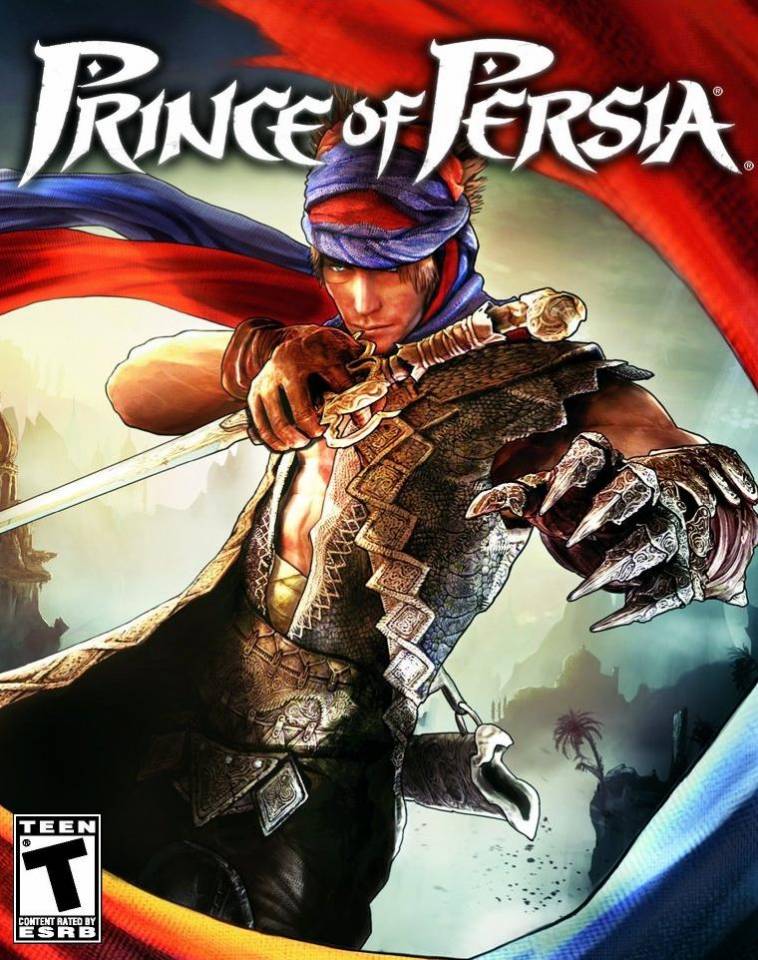
Same Name Reboot Games - Giant Bomb
When a franchise tries to start over by releasing a game with the same title as the first game in the series, or the name of the series in general.
Last edited:
Apparently in Japan, survival horror isn’t survivable without this haircut.



